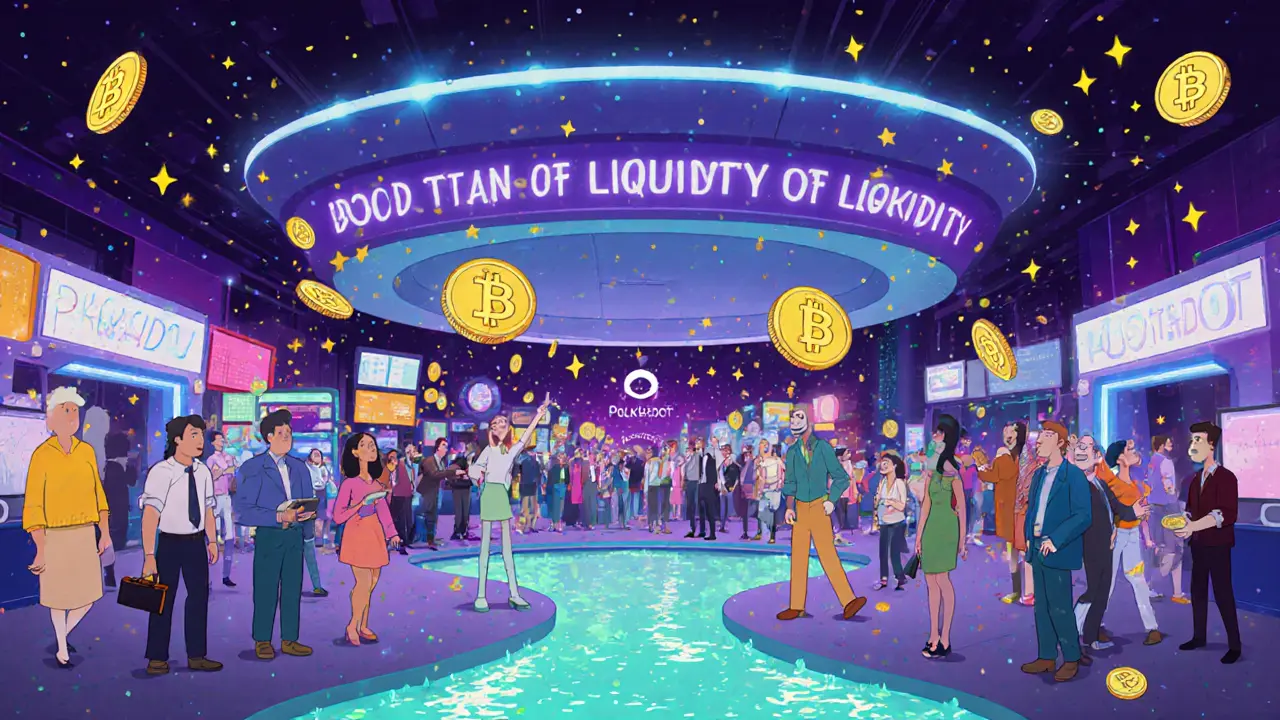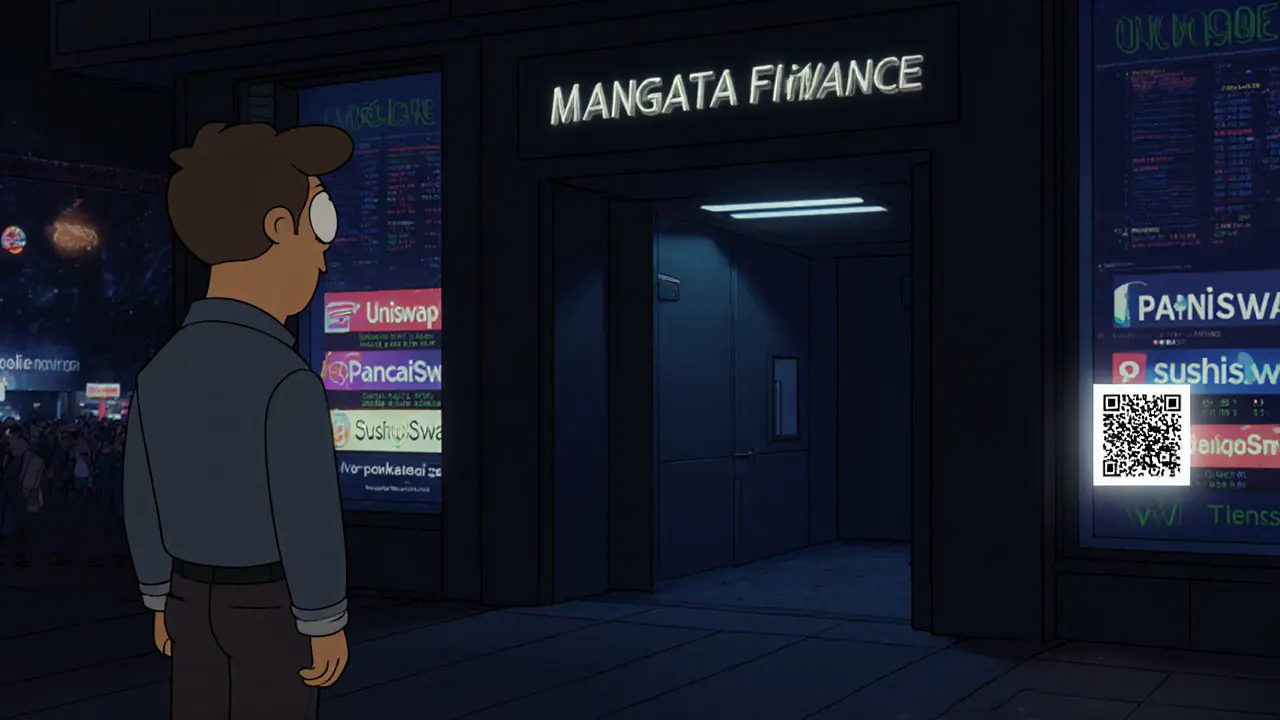Gas Fee Savings Calculator
Calculate Your Potential Savings
See how much you could save by switching to Mangata's fixed fee model compared to traditional Ethereum-based DEXes.
Your Potential Savings
Mangata charges a fixed fee regardless of network congestion, while Ethereum-based DEXes have variable gas fees that can range from $5 to $100+. Your estimated savings demonstrate the real value of Mangata's no-gas economy.
Based on current Ethereum network conditions
Most crypto traders know the pain: you place an order, only to see it get front-run by a whale, or you pay $50 in gas fees to trade $200 worth of tokens. It’s not just annoying-it’s a barrier that pushes small traders out of DeFi. That’s where Mangata crypto exchange comes in. Built on Polkadot, Mangata Finance isn’t trying to be another Uniswap. It’s trying to fix what’s broken in decentralized trading.
How Mangata Finance Solves the Gas Fee Problem
Traditional DeFi platforms charge gas fees based on network congestion. On Ethereum, that can mean $10 to $100 per trade. On slower chains, it’s cheaper-but still unpredictable. Mangata Finance removes this entirely. It uses a no-gas economy, meaning every trade costs the same fixed fee, regardless of network load. This isn’t a discount. It’s a structural redesign. You don’t pay per transaction-you pay a flat rate built into the protocol. That makes it possible for someone trading $50 to have the same cost structure as someone trading $50,000. This isn’t marketing fluff. It’s made possible by Mangata’s custom-built parachain within the Polkadot ecosystem. Unlike Ethereum, where fees are paid to miners, Mangata’s fees go directly to liquidity providers and validators. That means the people who keep the system running are rewarded fairly, and users aren’t at the mercy of Ethereum’s volatile fee market.Proof-of-Liquidity: A New Kind of Security
Most blockchains use Proof-of-Work or Proof-of-Stake to secure their networks. Mangata uses something called Proof-of-Liquidity (PoL). Instead of locking up tokens just to validate blocks, users earn rewards by providing liquidity to trading pairs. This turns liquidity provision into a core security mechanism. The more liquidity in a pair, the harder it is to manipulate prices or front-run trades. Think of it like this: on Uniswap, anyone can front-run your trade if they see it in the mempool. On Mangata, the system doesn’t even let those trades be visible until they’re confirmed. PoL makes the order book private until execution, which eliminates frontrunning. That’s not just a nice feature-it’s a game-changer for retail traders who’ve been getting crushed by bots.Backed by Big Names, But Still Quiet
In 2023, Mangata Finance raised $4.2 million from investors like Polychain Capital and Altonomy. That’s not a massive sum compared to what Ethereum-based DEXes have raised, but it’s significant for a Polkadot-native project. These investors aren’t just throwing money at hype-they’re betting on the long-term viability of cross-chain DeFi. Polkadot’s ability to connect blockchains gives Mangata a unique edge: it can eventually pull liquidity from Bitcoin, Ethereum, and other chains without needing wrapped tokens. But here’s the catch: there’s almost no public data on how many people are actually using it. No Reddit threads. No Twitter buzz. No Discord activity. No user reviews on DeFiLlama or Dune Analytics. That doesn’t mean it’s dead-it might just be in stealth mode. But for a platform that claims to be for everyday traders, the lack of community feedback is concerning.
What We Don’t Know (And Why It Matters)
Here’s the reality: we don’t know how fast trades execute. We don’t know which wallets work with it. We don’t know if it supports mobile trading. We don’t know which tokens are listed. We don’t have a single screenshot of the interface. There’s no API documentation. No mobile app. No guide on how to connect your wallet. That’s not normal for a DeFi platform in 2025. Even lesser-known DEXes like Trader Joe or Curve have detailed onboarding guides, wallet compatibility lists, and active communities. Mangata’s website is clean, professional-but empty. No testimonials. No FAQs. No support channels. That’s a red flag for anyone considering locking up funds. Security audits? Not public. Team background? Limited. Code repository? Hard to find. If you’re serious about using Mangata, you’re going in blind. That’s not FOMO-friendly. It’s risky.How It Compares to Other DEXes
| Feature | Mangata Finance | Uniswap (Ethereum) | SushiSwap (Ethereum) | PancakeSwap (BSC) |
|---|---|---|---|---|
| Gas Fees | Fixed, no gas | High, variable ($5-$100+) | High, variable | Low ($0.10-$1) |
| Front-Running Protection | Yes (private order execution) | No | No | No |
| Network | Polkadot parachain | Ethereum | Ethereum | Binance Smart Chain |
| Liquidity Depth | Unknown | $10B+ | $2B+ | $5B+ |
| Wallet Support | Unknown | MetaMask, Phantom, etc. | MetaMask, Trust Wallet | MetaMask, Trust Wallet |
| Community Activity | Very low | High | High | High |
Mangata’s biggest advantage is its front-running protection and fixed fees. But it’s also the only one here with zero public liquidity data. Uniswap and PancakeSwap have billions in locked value. Mangata? We don’t know if it’s $10 million or $100 million. That’s a huge risk.

Who Should Use Mangata Finance?
If you’re a trader who’s tired of paying $30 in gas to flip a small token, and you’re already using Polkadot-based assets like DOT, KSM, or parachain tokens-Mangata could be worth testing. But only if you’re willing to accept the unknowns. It’s not for beginners. There’s no customer support. No tutorials. No help center. You need to understand how parachains work, how to connect a wallet like Substrate-based Polkadot.js, and how to navigate a platform with no user feedback. It’s also not for someone looking to trade Bitcoin or Ethereum directly. Right now, Mangata only supports assets native to the Polkadot ecosystem. If you want to trade ETH or BTC, you’ll need to bridge them first-which adds complexity and risk.The Bottom Line
Mangata Finance has a brilliant idea: make DeFi fair for small traders by removing gas fees and front-running. The technology is solid. The funding is real. The team has experience. But right now, it’s a promise, not a product. There’s no proof it works at scale. No community to validate it. No data to back up its claims. If you’re an early adopter who’s comfortable with risk and wants to help shape the next generation of DEXes, then Mangata might be worth exploring. If you’re looking for a reliable, proven platform to trade crypto today? Stick with Uniswap, PancakeSwap, or a regulated centralized exchange. Mangata isn’t ready for the mainstream yet. But it’s one to watch-if it launches its public interface and starts showing real trading volume, it could be the DEX that finally puts retail traders back in control.Is Mangata Finance a centralized or decentralized exchange?
Mangata Finance is a decentralized exchange (DEX). It runs on a Polkadot parachain, meaning there’s no central company controlling trades or holding user funds. All transactions happen directly between wallets using smart contracts. Unlike centralized exchanges like Binance or Coinbase, you keep full control of your crypto at all times.
Does Mangata support Ethereum or Bitcoin trading?
Not directly. Mangata is built for the Polkadot ecosystem, so it only supports native Polkadot parachain tokens like DOT, KSM, and other assets built on Polkadot. To trade ETH or BTC, you’d need to bridge them into Polkadot using a cross-chain bridge like Polkadot’s Asset Hub or a third-party service. That adds steps and risk, so it’s not recommended for beginners.
How do I connect my wallet to Mangata?
Currently, there’s no official guide. Based on Polkadot standards, you’ll likely need a Substrate-based wallet like Polkadot.js Extension or Talisman. These wallets work with Polkadot parachains. MetaMask won’t work unless Mangata adds EVM compatibility, which hasn’t been announced. Without clear instructions, connecting your wallet is a technical challenge.
Is Mangata Finance safe to use?
There’s no public security audit report available. While the team has technical expertise and institutional backing, safety in DeFi depends on audited code, transparent governance, and community scrutiny. Without any of those being publicly documented, Mangata’s safety is unverified. Never invest more than you’re willing to lose until audits and user data are made public.
Can I stake DOT on Mangata?
Mangata doesn’t offer traditional DOT staking like Polkadot’s native staking system. Instead, it rewards users through its Proof-of-Liquidity mechanism. You earn rewards by providing liquidity to trading pairs on the exchange, not by locking DOT to secure the network. This is different from staking on a validator-you’re earning from trading volume, not block validation.
Why hasn’t Mangata gained more popularity?
Mangata is still in early development. It hasn’t launched a public-facing interface, doesn’t have a marketing team actively promoting it, and lacks user reviews or social proof. Most DeFi platforms grow through community and media attention. Mangata hasn’t yet reached that stage. Its future depends on whether it can attract liquidity and users before competitors in the Polkadot ecosystem do.
What’s the future of Mangata Finance?
If Mangata releases its public interface, publishes security audits, and starts showing real trading volume, it could become a leading DEX within Polkadot. Its no-gas model and front-running protection are unique. But if it stays quiet, stays inaccessible, and doesn’t attract liquidity, it may fade into obscurity like many other Polkadot projects. The next 6-12 months will be critical.